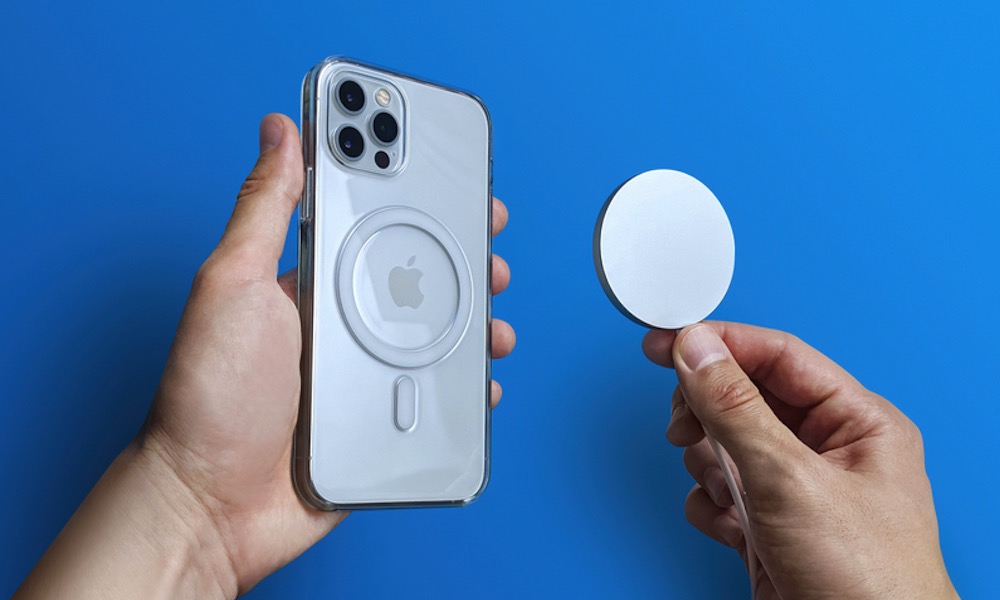Apple Warns to Keep iPhones and MagSafe Accessories Six Inches Away from Your Pacemaker
 Credit: Mr. Mikla / Shutterstock
Credit: Mr. Mikla / ShutterstockToggle Dark Mode
As great as Apple’s MagSafe technology is, there’s one pretty big problem with it that could be a serious deal-breaker — it actually has the potential to kill people who rely on implantable medical devices like pacemakers and defibrillators if they’re not reasonably careful.
Earlier this month, we reported on a medical study that had discovered that the magnetic field emitted from the back of the iPhone 12 can actually shut down at least some implantable defibrillators when it’s placed close enough to those devices, such as being carried in a shirt pocket.
To be fair, the problem isn’t specifically limited to the iPhone 12 — the study found that wrist-worn fitness trackers could create similar problems — but it does seem that most users are safe as long as they don’t carry their devices in lower pockets — although it does sound like we’re talking about cargo pants pockets here.
Although Apple did offer a generic disclaimer noting that the electromagnetic fields from the iPhone “may interfere with medical devices, such as pacemakers and defibrillators,” this is actually something that it’s had in the fine print for some time, even long before MagSafe came along.
Now, however, it seems that in the MagSafe era, Apple has decided that it needs to be a bit more clear on exactly what the risks are, and it’s added a much more detailed explanation to its support document that explains the magnets inside its iPhone 12 lineup and MagSafe accessories.
Specifically, Apple claims that the new MagSafe technology doesn’t actually change anything, noting that this risk has existed among iPhone users for years, implying it’s merely coming to people’s attention now that the magnets are a more prominent part of the iPhone’s design.
Though all iPhone 12 models contain more magnets than prior iPhone models, they’re not expected to pose a greater risk of magnetic interference to medical devices than prior iPhone models.
It’s a fair statement, since there’s much more to interfering with medical devices than merely powerful magnetic fields, and it’s one of the reasons that cellular phones were originally banned within key areas of hospitals such as intensive care units, and although modern medical equipment now includes appropriate shielding that protects it from this kind of interference, tiny implantable devices are much more difficult to shield.
To that end, Apple has added some specific recommendations to its support document, advising users to keep their iPhone and MagSafe accessories at least six inches away from any implanted devices during normal use, and twice that distance when actively charging.
“Medical devices such as implanted pacemakers and defibrillators might contain sensors that respond to magnets and radios when in close contact. To avoid any potential interactions with these devices, keep your iPhone and MagSafe accessories a safe distance away from your device (more than 6 inches / 15 cm apart or more than 12 inches / 30 cm apart if wirelessly charging). But consult with your physician and your device manufacturer for specific guidelines.”
Note that these are generic recommendations, however, and Apple makes it clear that anybody who relies on an implantable medical device to keep them alive should consult with their doctor and the manufacturer of the medical device in question for specific guidelines, since many of these companies already have specific recommendations in this area.
Most notably, however, in both Apple’s MagSafe support document and the iPhone User Guide, Apple makes it clear that “If you suspect iPhone or any MagSafe accessories are interfering with your medical device, stop using your iPhone or MagSafe accessories.”
Apple also clarifies that the MagSafe Charger and MagSafe Duo present risks because they not only include magnets, but that they also include radios. This is an aspect of these devices that many users may not be aware of, although the radios presumably aren’t active except when these devices are connected to power.
However, as most users of implanted medical devices should already know, this isn’t so much an iPhone 12 or MagSafe problem as it’s a risk presented by any smartphone or other magnetic device or electromagnetic field. For example, doctors have long advised patents with pacemakers or implanted defibrillators (ICDs) to avoid going through metal detectors at airport security and avoid lingering near the security scanners in retail stores.
In fact, the American Heart Association has published a list of many things that can interfere with pacemakers and ICDs, so while this latest research singling out the iPhone 12 and MagSafe may seem a bit shocking on the surface, it should really come as no surprise to those who already live with these medical devices every day.






